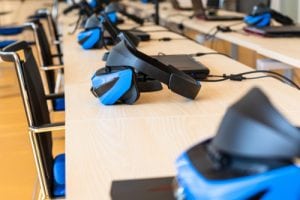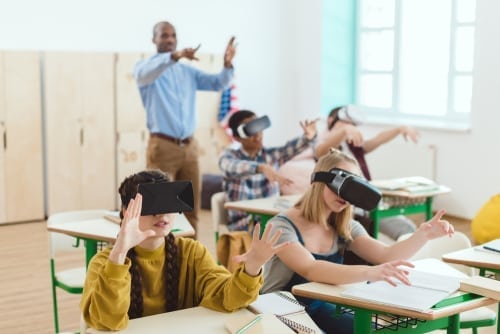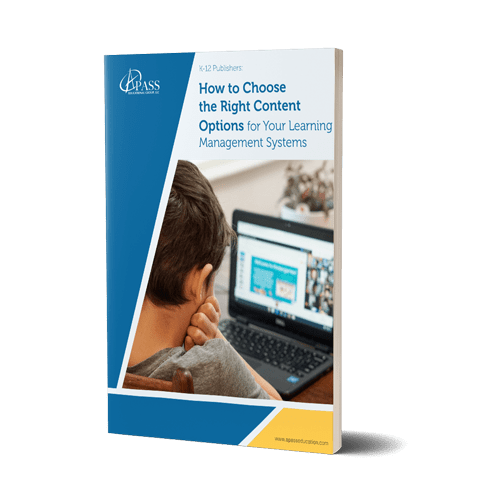Virtual reality technology is at the forefront of educational reform and rapidly changing the way society educates. Many years ago, the cost of virtual reality technology was too high to be integrated into the public and private school systems, but recent advancements have allowed this technology to become affordable, and revolutionize the education industry. Since the technology became affordable, there has been an aggressive and innovative push by many companies to create educational applications that are not only fun and exciting but are proven to increase the student’s ability to retain knowledge and expand their skills.
The additional benefit of virtual reality is that virtual and augmented reality simulators have increased human capital by allowing students and educators the ability to perform tasks that previously deemed too costly. The level of specialized training completed through the use of virtual and augmented reality technology is increasing at a dramatic rate. There are numerous specialized fields that the resources for superior training are just not available. Companies in this industry have been attempting to make educational software that drastically diminishes the cost of specialized training. Here are a few examples of what firms in the industry have been trying to do.
- Google’s expeditions pioneer program is sending expedition teams to schools with the objective of educating students on the sights and sounds of the world that might not have been previously possible to experience. The virtual reality system simulates a field trip for students to the far reaches of the world.

- Curiscope is a growing educational startup company that is using specialized T-shirts with smartphones to simulate X-rays and MRIs. The augmented reality technology is allowing students to understand the human body in unique ways.
- Thinglink is using virtual and augmented reality technology to allow educators to use interactive tags and links on 360-degree images. Thinglink is changing the way students take notes because they never have to look away from the presentations and it allows them to focus on the topic at hand at a higher level.
Educators need to be aware of the developing innovative changes that are occurring in the educational sector to ensure that their students are competitive and given the best chance to succeed. As the technology is getting better and more affordable, if you are an educator, now is the time to start studying the virtual and augmented reality sector to determine how you can apply and integrate this technology in the classroom to improve the quality of education for your students.
Are you considering integrating virtual reality technology in your curriculum? Don’t know how to find the right experts who can help with your project? You can either go with your in-house experts or outsource it.






